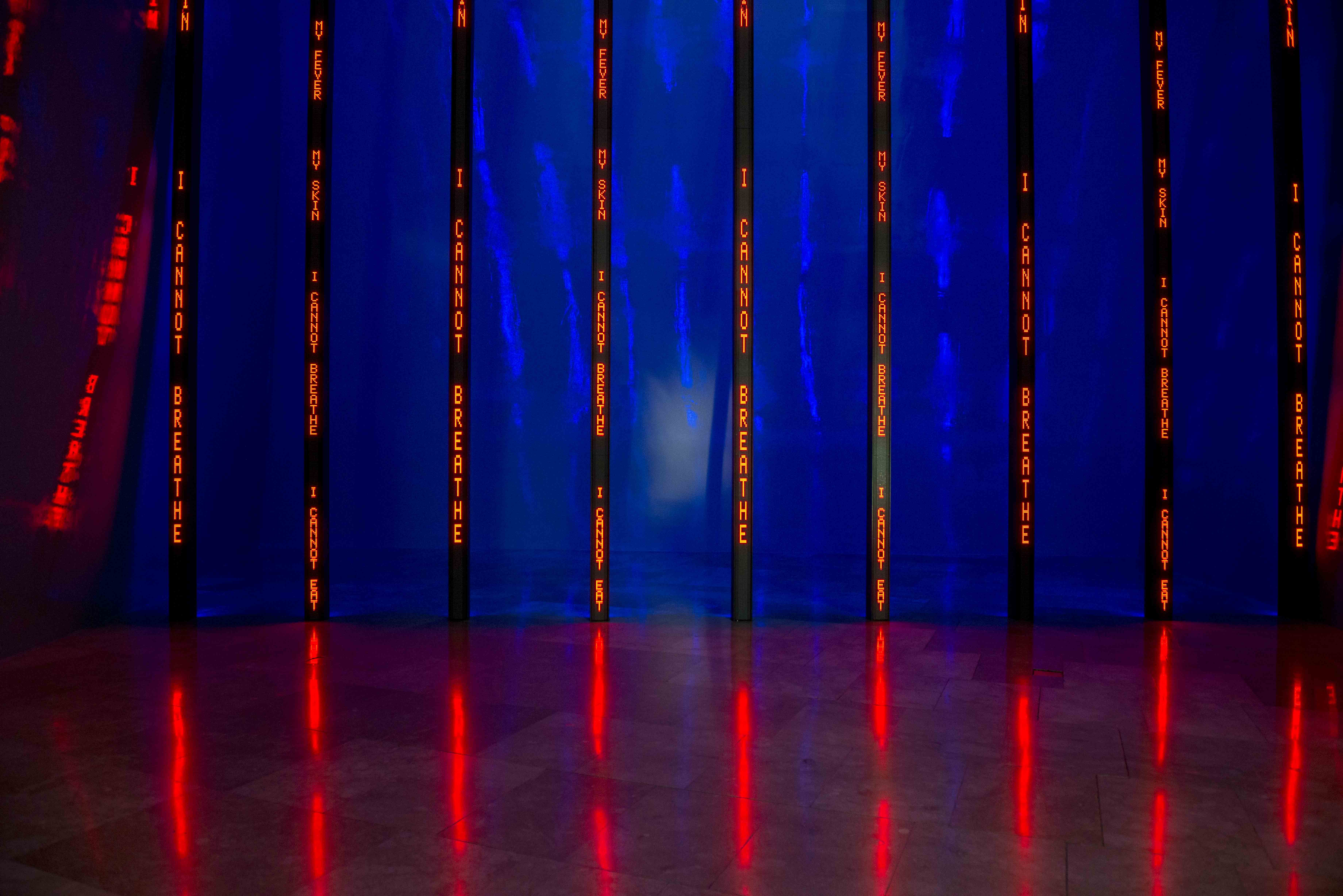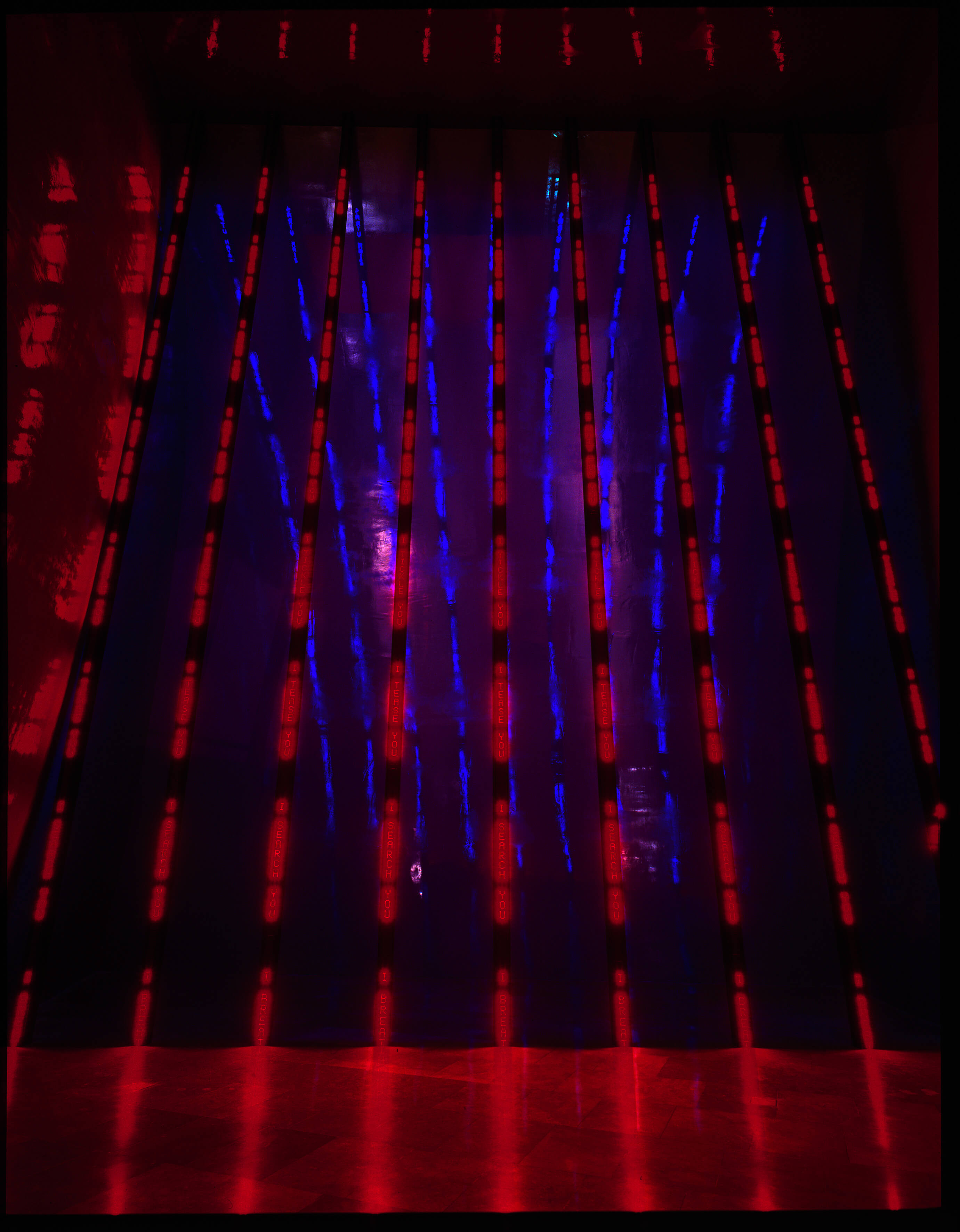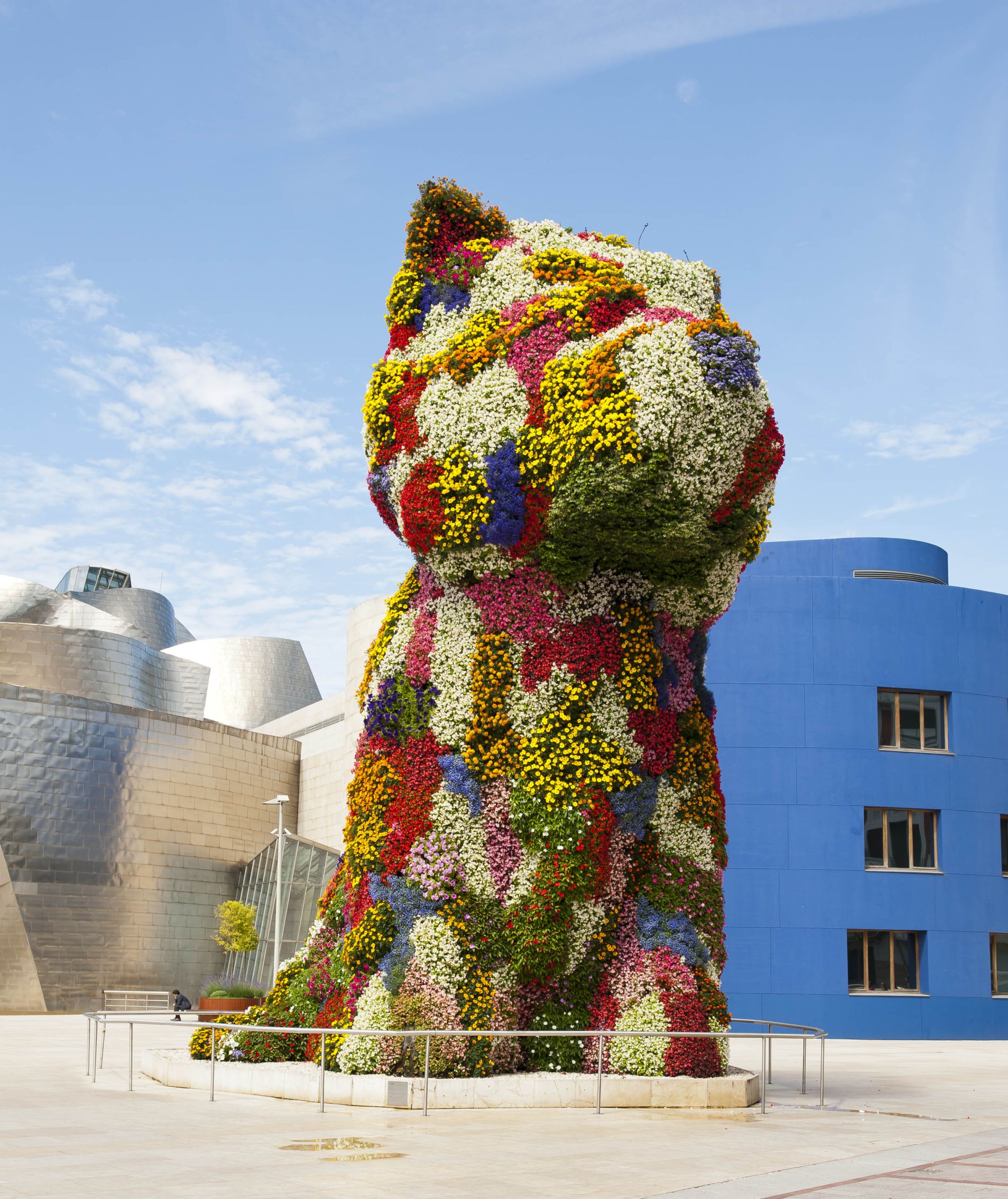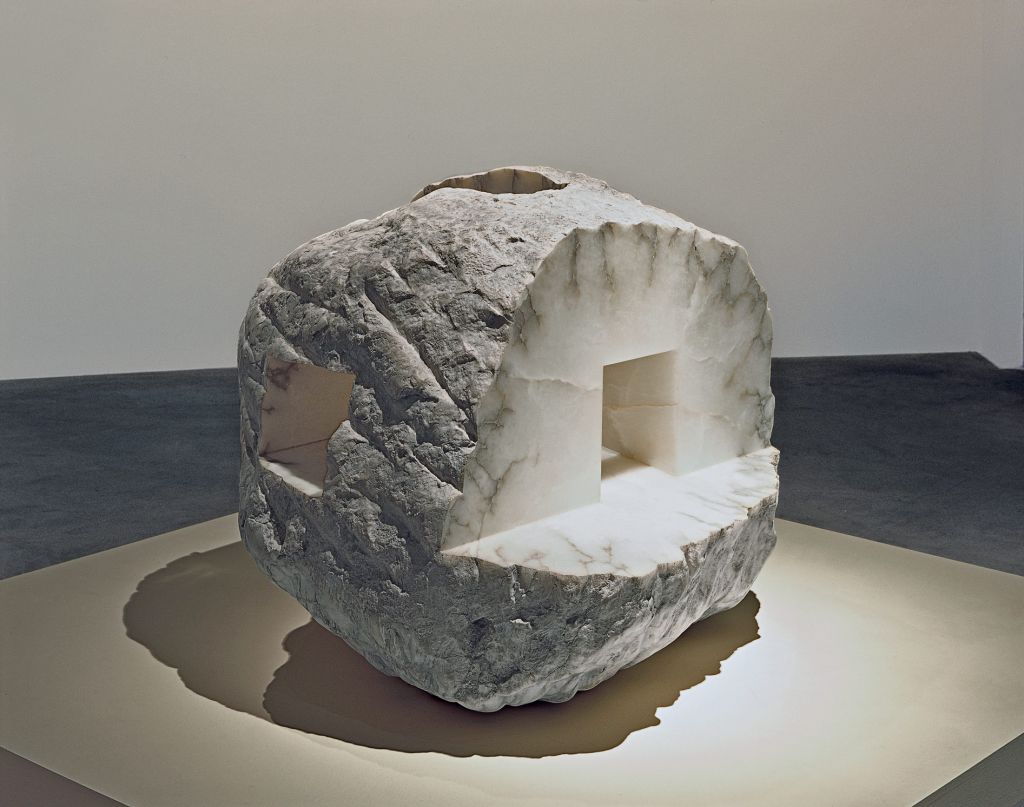Installation for Bilbao
1997/2017Electronic LED signSite-specific dimensions
Jenny Holzer began her first series, Truisms, in 1977 as a distillation of an erudite reading list from the Whitney Independent Study Program in New York, where she was a student; by 1979 she had written several hundred of these one-liners. Beginning with A LITTLE KNOWLEDGE GOES A LONG WAY and ending with YOUR OLDEST FEARS ARE YOUR WORST ONES, the Truisms employ a variety of voices and express a wide spectrum of biases and beliefs. If any consistent viewpoint emerges in the edgy, stream-of-consciousness provocations, it is that truth is relative and that each viewer must participate in determining what is legitimate and what is not. Since the Truisms, Holzer has continued to use language as her primary medium and has employed myriad ways to convey her messages. Selections from her Inflammatory Essays series (1979–82), for example, appeared on unsigned, commercially printed posters pasted on buildings and walls around Manhattan.
When phrases by Holzer such as ABUSE OF POWER COMES AS NO SURPRISE and MONEY CREATES TASTE flashed from the Spectacolor board above Times Square in 1982, it marked her first appropriation of electronic signage. This mode of dissemination brought her disquieting messages to a new height of subversive social engagement. Her strategy—placing surprising texts where normal signage is expected—gives Holzer direct access to a large public that might not give "art" any consideration, while allowing her to undermine forms of power and control that often go unnoticed. Her installations over the last three decades have raised questions about the viability of public art, the commodification and consumption of art, and the relationship between the personal and the political.
Conceived as a permanent, site-specific work for the Guggenheim Museum Bilbao's Frank O. Gehry-designed building, Installation for Bilbao reflects Holzer's expanding engagement in the late 1980s and 1990s with architectural space and, more specifically, with the institutional space of the museum. During her 1989 retrospective at the Solomon R. Guggenheim Museum in New York, for example, blinking messages from her various series raced the length of an L.E.D. display board installed along the winding inner wall of the museum's spiral ramp. Holzer's Installation for Bilbao comprises a row of nine vertical, double-sided L.E.D. signboards, each more than 12 meters tall, which bisect one of the Gehry building's tall, irregular galleries. The floor-to-ceiling columns form an imposing but permeable barrier whose rigid geometry contrasts with the organic curves of the surrounding architecture. The texts—transmitted in Basque, Spanish, and English—are a variation of Arno, a body of writing originally composed for a project benefiting AIDS research and then adapted for a 1996 outdoor projection in Florence. While consideration of the AIDS epidemic provides an immediate and tragic context, these writings—such as I SAY YOUR NAME and I SAVE YOUR CLOTHES—evoke universal themes of intimacy, death, and loss. In bringing her art from the street to museum environments, Holzer focuses on an audience that differs markedly from the unsuspecting passerby. However, as in so much of her work, the Bilbao installation still negotiates the tenuous and fraught border between private and public realms.
Original title
Installation for Bilbao
Date
1997/2017
Medium/Materials
Electronic LED sign
Dimensions
Site-specific dimensions
Credit line
Guggenheim Bilbao Museoa
Installation for Bilbao
Jenny Holzer chooses words as her means of artistic expression. Her aphorisms remind us that language can be simple and straightforward: self-evident truths, phrases heard on the streets about war, politics, death or violence
Resources
At the Museum




Perspectives
Installation for Bilbao by Jenny Holzer
Actress and director Leticia Dolera and curator Maite Borjabad walk around Jenny Holzer’s Installation for Bilbao (1997/2017) as they read the artist’s unsettling messages in English, Spanish, and Basque, revealing human commitment and social engagement.






